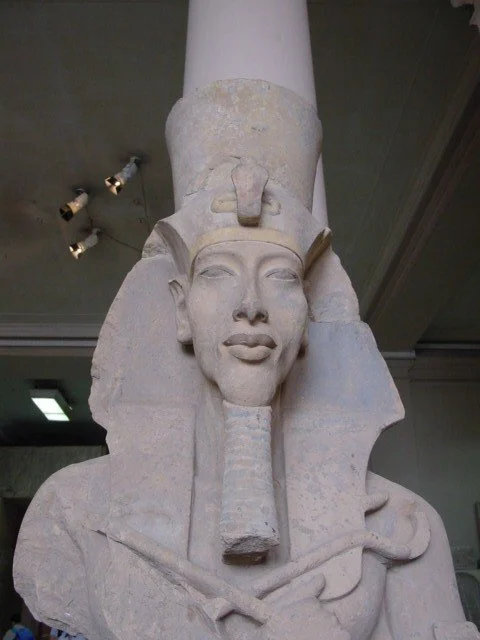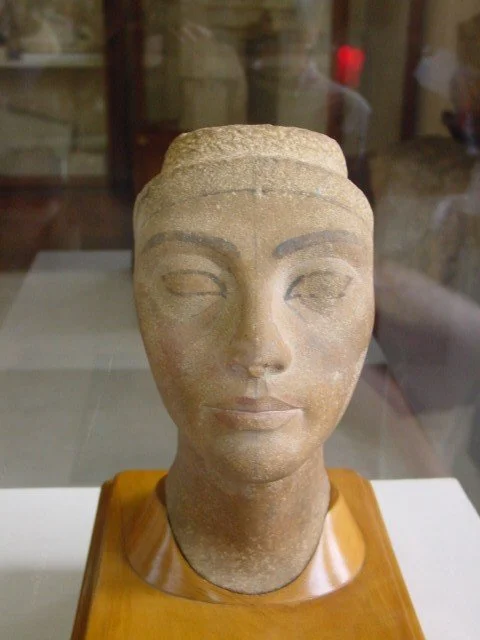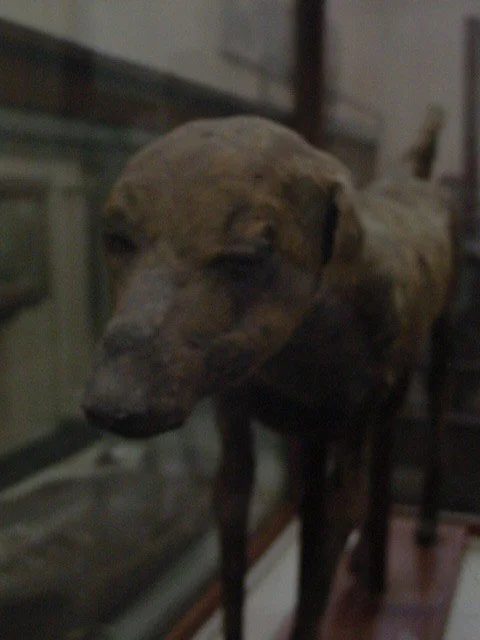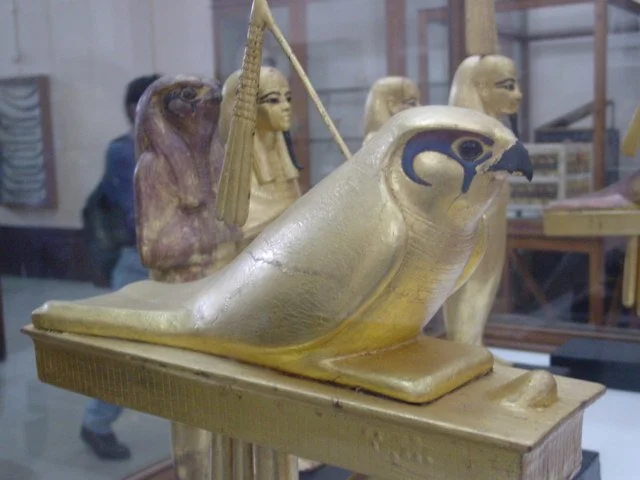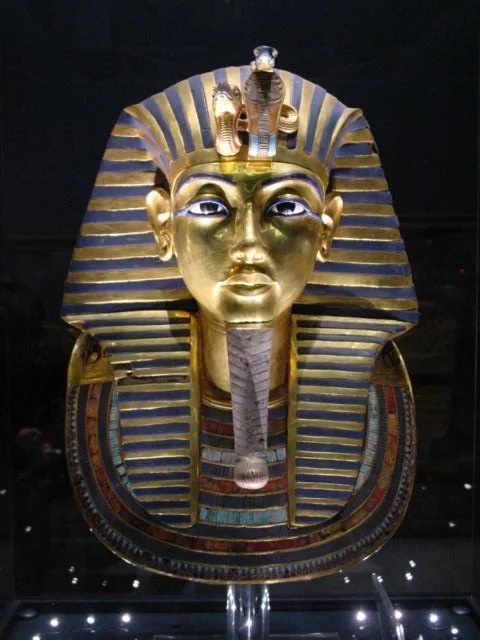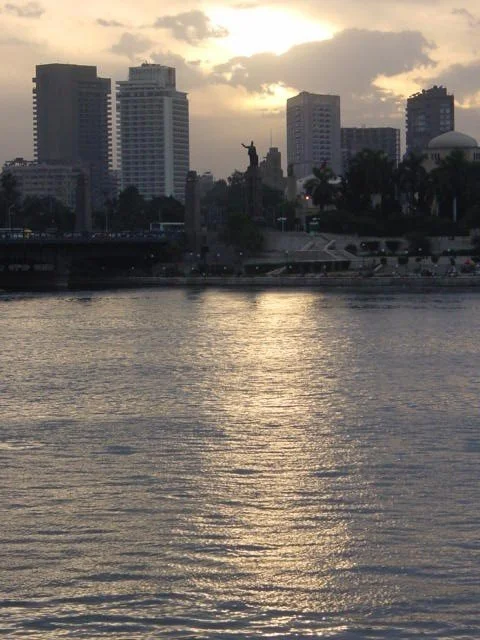December 28, 2001
Statue of Akhenaten.
Unfinished bust of Queen Nefertiti.
Today we did one thing: the Egypt Museum. If you've seen the British Museum, you've got some idea what's in the Egypt Museum - or perhaps what should be in the Egypt Museum. There were not as many helpful labels, but fortunately we had a great guide book which we used to explore the highlights. Even so, we ended up spending about six to eight hours there.
The first thing you notice about the place is that it is surrounded by police. As are many places in Egypt. Given the attack on tourists in Luxor and other places in the past several years (as well as the fact that the city of Cairo alone has 100,000 police), you are never far from finding someone in uniform.
Mummified dog.
Once inside, though, the place is vast. Rooms full of sarcophagi, bas relief, statues, miniatures, animal mummies, people mummies, you name it. Statues carved in stone almost 5000 years ago are remarkably accurate physiologically, if idealized. Details like toenails are included, and ornithologists can conclusively identify the species of the birds in ancient murals.
Gilded falcon from King Tut’s tomb.
King Tut’s famous burial mask.
Feeling excited and a little overwhelmed, we paused for soup and a mixed grill lunch before diving back into it again. The afternoon was spent with King Tutankhamen's stuff - a 19 year-old king of little consequence, except that his grave and all its trappings were found mostly intact. His famous burial mask stands as the centerpiece, but there was much more to be seen - alabaster jars that contained his viscera, throne chairs, gold pendants as big as your head, curved sticks that bear a resemblance to boomerangs (!). Imagine what important kings' graves must've been like.
The Nile River.
We wandered outside, dazed from the sheer immensity of the gold gathered there, and admired the setting sun over the Nile River.

